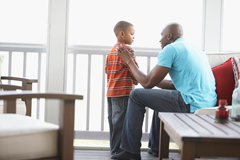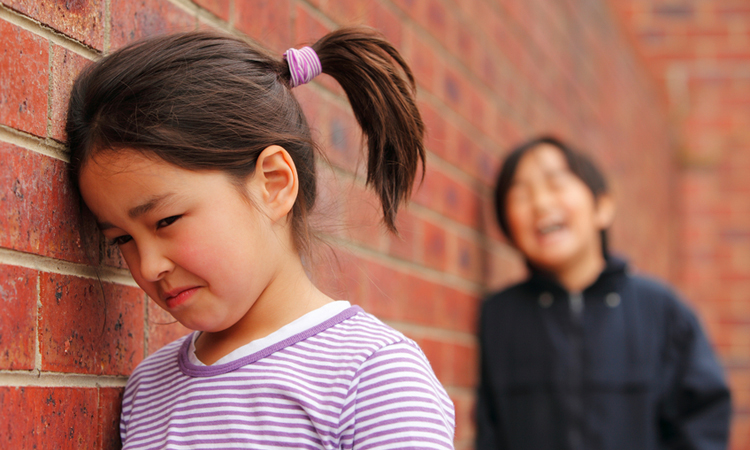“As parents, we all want our children to feel safe. If your child is being bullied, talk to them about it, listen with compassion and come up with an action plan together.”
–Rose Caiola
Keeping Kids Safe In An Unsafe World
Two parents get a phone call from school. Both their children have been in a fight. One child is the suspected bully, the other the clear victim. Either side of this equation generally leads to an upset parent fretting how to protect their child from reprisal as the bully, or further victimization as the bullied. Fists flying are often the physical and the most obvious form of bullying, but equally damaging bullying can show up as constant teasing, intentional exclusion from groups or being targeted online from known or anonymous sources.
For parents, two important questions often arise: what is this doing to my kid, and what can I do about it?
The scars of ongoing bullying can be invisible to parents, but the emotional and mental reverberations of feeling like the victim are clearly present for children. Parents sometimes mistake signs of being bullied as opposition or shyness, when an unwillingness to go to school, constant shame or embarrassment, or unexplained physical pain may be the best self-protection strategies children can figure out.
 According to the United States Department of Justice, each day 160,000 children miss school because they are afraid of being bullied. The damage caused by bullying is potentially extensive because it goes beyond normal conflict and includes an imbalance of power, intent to harm, threat of further aggression and terror to the bullied.
According to the United States Department of Justice, each day 160,000 children miss school because they are afraid of being bullied. The damage caused by bullying is potentially extensive because it goes beyond normal conflict and includes an imbalance of power, intent to harm, threat of further aggression and terror to the bullied.
Today, even the protective walls of the home can be infiltrated with cyberbullying attacks that leave a young person feeling helpless and emotionally damaged from the barbs of their peers. As easy as it may seem from an adult perspective to shrug it off, when social media and your peer group help define who you are during childhood and adolescence, then both physical and social bullying require greater support from parents to navigate these challenges.
While it may seem overwhelming to protect the bullied child or redirect the bully, the foundation begins with parents understanding how their parenting promotes children’s healthy self-awareness and ability to communicate boundaries and needs. Think of it as the 4 Ms of parenting: modeling, monitoring, molding and mending.
As for modeling, how does your behavior as a parent help your child understand how to communicate assertively and value respect of self and others? When parents are able to respond to frustrating situations with balanced and assertive responses, the bullied child better understands how to respect themselves while the bully learns how to better respect others.
Much of bully’s power comes from the actual or perceived inability of others to intervene because they are not aware or are afraid. When parents monitor who children are connected with in-person and online, while also noting how these interactions play out, there are more opportunities to observe signs of bullying, intervene by gathering more information and work with the child to develop a plan to address the problem.
 An added preventive measure for bullying is making sure to mold children who value expressing themselves in a healthy way, by structuring their environment to ensure these values are consistently promoted. This may include instituting family dinners to review the day and talk through challenges; hosting events with your children’s friends and observing how they interact; or giving children responsibilities that help the potential bully develop empathy or the potential bullied develop an assertive style of communication.
An added preventive measure for bullying is making sure to mold children who value expressing themselves in a healthy way, by structuring their environment to ensure these values are consistently promoted. This may include instituting family dinners to review the day and talk through challenges; hosting events with your children’s friends and observing how they interact; or giving children responsibilities that help the potential bully develop empathy or the potential bullied develop an assertive style of communication.
Despite the many preventive and intervention measures parents can attempt, bad things can still happen – like a fist fight. It is during the aftermath that parents help mend their broken children by using the situation to support their growth. For the bully, it may be implementing consequences that require the child to repair the damage caused, while assuring them that “We love you, but disapprove of your actions.”
For the bullied, it may begin by validating the hurt that the child has experienced, instead of jumping to fix it, then collaboratively working together toward a solution in order to help build an assertive child who can solve their own problems. Whether it’s the bully or the bullied, parents have an important role in beating the biggest problem: helping kids feel safe in a sometimes unsafe world.

